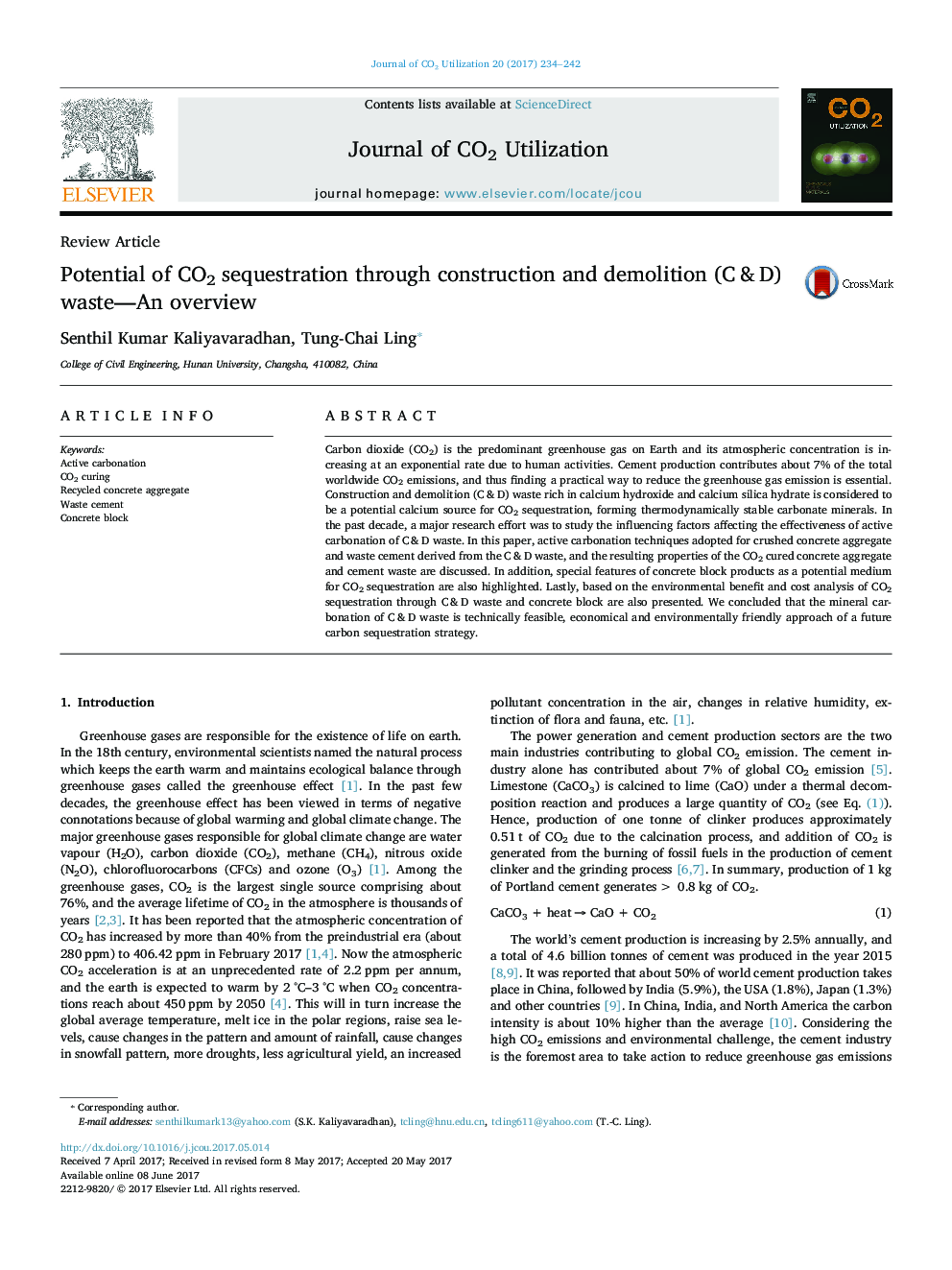| Article ID | Journal | Published Year | Pages | File Type |
|---|---|---|---|---|
| 4757667 | Journal of CO2 Utilization | 2017 | 9 Pages |
Abstract
Carbon dioxide (CO2) is the predominant greenhouse gas on Earth and its atmospheric concentration is increasing at an exponential rate due to human activities. Cement production contributes about 7% of the total worldwide CO2 emissions, and thus finding a practical way to reduce the greenhouse gas emission is essential. Construction and demolition (C&D) waste rich in calcium hydroxide and calcium silica hydrate is considered to be a potential calcium source for CO2 sequestration, forming thermodynamically stable carbonate minerals. In the past decade, a major research effort was to study the influencing factors affecting the effectiveness of active carbonation of C&D waste. In this paper, active carbonation techniques adopted for crushed concrete aggregate and waste cement derived from the C&D waste, and the resulting properties of the CO2 cured concrete aggregate and cement waste are discussed. In addition, special features of concrete block products as a potential medium for CO2 sequestration are also highlighted. Lastly, based on the environmental benefit and cost analysis of CO2 sequestration through C&D waste and concrete block are also presented. We concluded that the mineral carbonation of C&D waste is technically feasible, economical and environmentally friendly approach of a future carbon sequestration strategy.
Related Topics
Physical Sciences and Engineering
Chemical Engineering
Catalysis
Authors
Senthil Kumar Kaliyavaradhan, Tung-Chai Ling,
